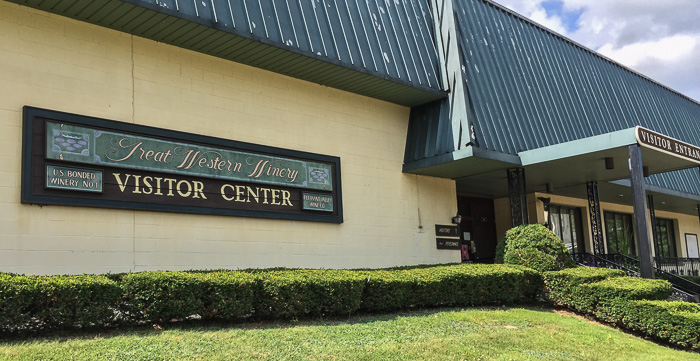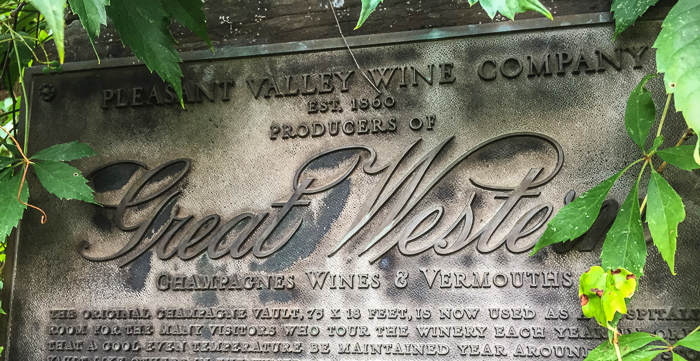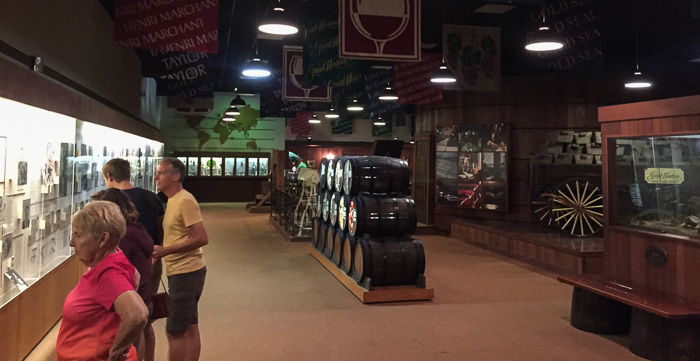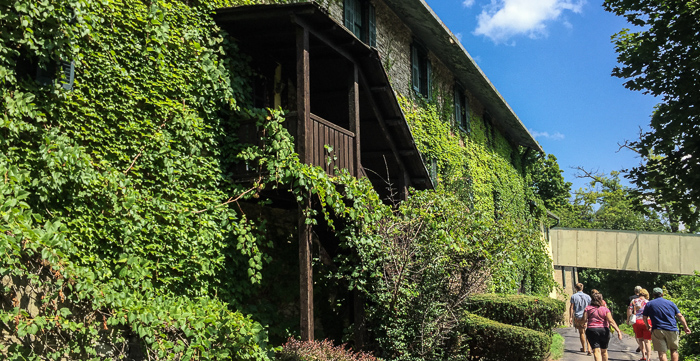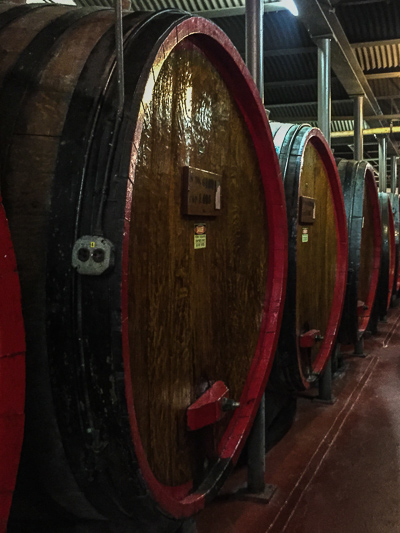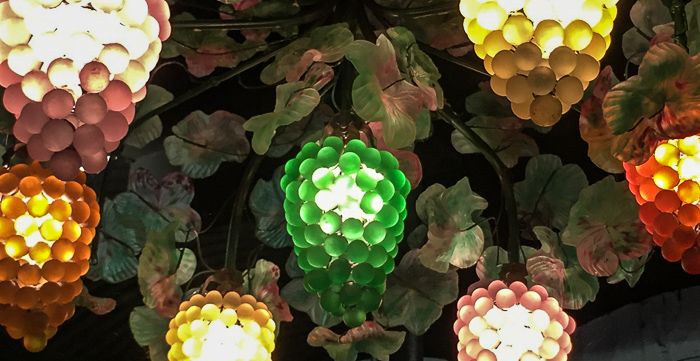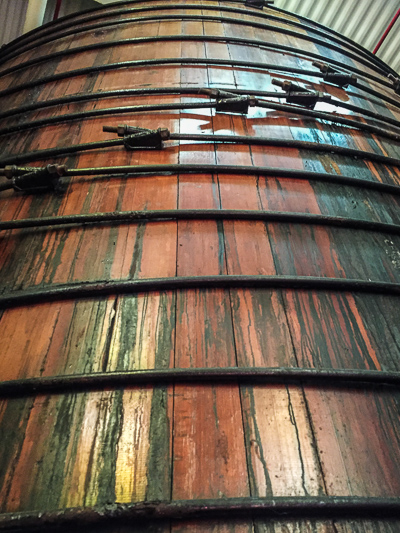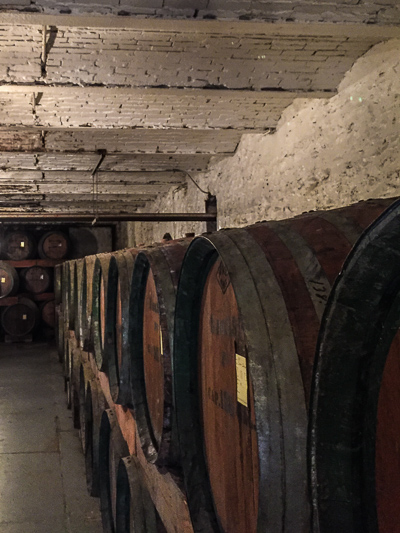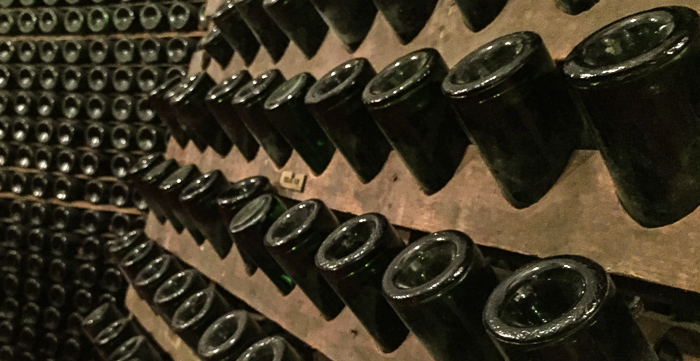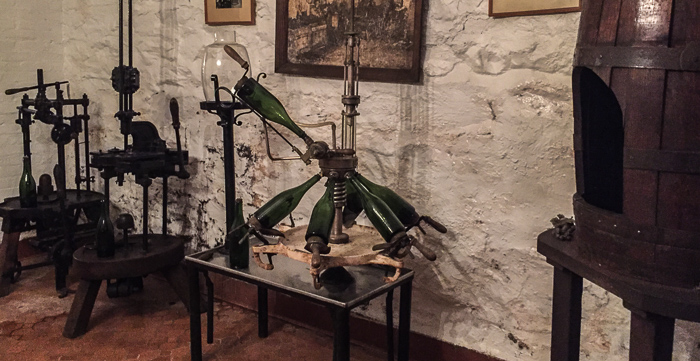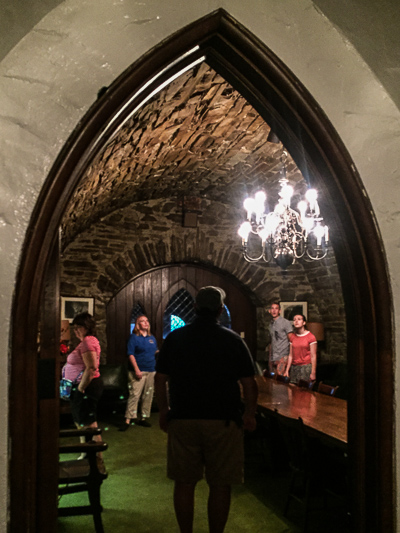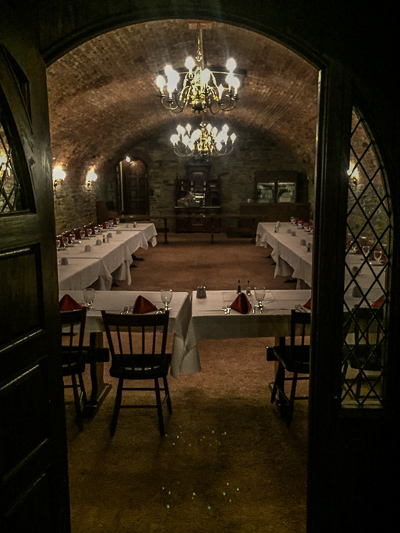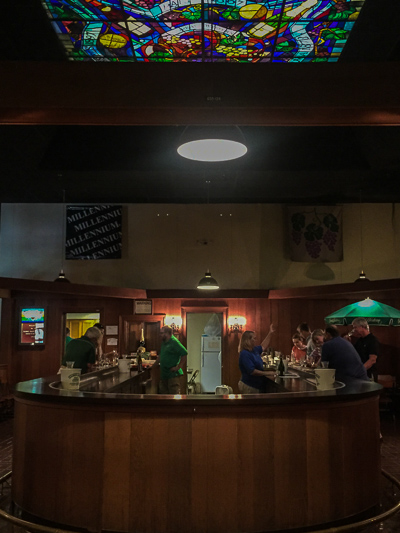Pleasant Valley Winery: Champagne Wishes and Cream Sherry Dreams
I visited the Pleasant Valley winery last summer and gave it a bum rap having been underwhelmed by the winemaking museum (a bit dated) and tastings (too sweet for my palate). What a difference a year - and a tour - makes. Or rather two tours: I visited with my friend Jill and liked it so much I took Jacob and Kaitlin (my son and his girlfriend) back two weeks later. If you’re a wine and/or history buff, I highly recommend a stop!
Of course a quality tour hinges on the guide, so no guarantees what your experience will be. My first guide was exceptionally knowledgeable, animated, and engaging while the second was, well…less so. I still recommend the visit. Tour guide aside, Pleasant Valley Wine Company is the oldest winery in the region, has a rich and varied history, and owns eight gorgeous buildings on the National Register of Historic Places. It’s hard to go wrong with that baseline.
Compared to other Finger Lakes wineries with sleek, new tasting rooms and panoramic views, Pleasant Valley’s visitor experience was rather drab to start. After turning off of Pleasant Valley Road, the drive down to the “Great Western Visitor Center” wound through faded buildings and vast, weed-filled parking lots. We were taken-aback but forged ahead, and the visit gradually gathered momentum.
Ok, are you as confused about this winery’s name as I was? Is it Pleasant Valley or Great Western?? The winery is officially registered as Pleasant Vally Wine Company, but in 1871, a well-known wine connoisseur declared the company’s champagne “the Great Champagne of the Western World.” You just can’t squander a quote like that, so the champagne was named “Great Western” and became such a popular product, its name became synonymous with the winery itself.
Back to the visitor center: On my first visit I was surprised to enter a cool, dim, hushed space, again quite a contrast from the light, airy wineries surrounding Keuka. It felt like stepping back in time, and was a refreshing treat on a blistering-hot day. We paid for our tour upon entering ($5 per person; tastings were free) and then took a few minutes to read about the winemaking process, check out the theater, and watch a model train race along the Bath-Hammondsport Railroad.
The tour began in a 15-passenger van (surprise!) with a quick drive back up the hill to the ivy-covered stone buildings across Pleasant Valley Road. We stood outside and soaked in the ambiance while learning of the winery’s history. In a nutshell, the “Hammondsport and Pleasant Valley Wine Company” was founded in 1860 by Charles Davenport Champlin and 12 local businessmen. After about 100 years of operation, a series of acquisitions ensued with the company purchased in turn by Taylor Wine, Coke, Seagram, and Vintners International. In 1993, Vintners sold the brands (labels) to Canandaigua Wine Co., but not the winery facilities. Mercury Aircraft purchased the Taylor and Pleasant Valley wine facilities in 1995 and leased the Great Western portion to the Doyle family doing business as Pleasant Valley Wine Co. Finally in 2002, the Doyle’s purchased the Great Western winery, and the label and facility were reunited under family control. Whew.
Our first peek inside didn’t disappoint. We gladly traded the oppressive heat and humidity for a refreshingly cool room lined with white oak wine barrels (handmade by coopers on-site) illuminated with a hand-blown glass chandelier. This building like many of the others stays between 68 and 72 degrees year-round due to thick stone walls - some 6 feet deep! - and rooms carved into the hillside.
As we moved along, our guide continually threw out fun tidbits like the fact that Pleasant Valley has the dubious distinction of being US Bonded No. 1, meaning it was the first winery to be taxed in the United States. Yay, taxes. In other news, Cream of Tartar is made from a by-product of the winemaking process. True story! Potassium bitartrate crystallizes in wine barrels and must be regularly scraped out; it’s known as wine stone or wine diamond, and is essentially crude Cream of Tartar. If you ever find flakes in your wine or crystals on the cork, you might consider yourself lucky. Apparently “…wine diamonds are an indicator that the grapes ripened for a long time, and that the winemaker fermented the wine slowly and with great care.”
So why do grapes flourish in the Finger Lakes region? A few reasons. First, the soil is deep and vines are typically planted on steep hills surrounding each lake; these two factors lead to excellent drainage. Further, the deep lakes in the region store heat which they release in the winter thereby creating a temperate microclimate which prevents early season frost and extends the growing season.
The next few buildings were my favorites, offering one visual treat after another. First was the 3-story building housing impossible tall tanks, some made of stainless steel (holding over 99,000 gallons) and others constructed of redwood. Yes, 44,000 gallon redwood tanks! Turns out there’s quite a bit of redwood on site: The visitor center theater is housed in a huge redwood barrel, and the wine tasting bar and surrounding furniture are carved redwood.
Next stop, sherry. Pleasant Valley still uses the Solera method for making sherry which requires multi-stage fractional blending to ensure a consistent flavor going back generations. They used to age sherry casks in full sunlight on the roof, but some regulatory body or another put the kibosh on that practice. The room we toured had simple but elegant sightlines due to the whitewashed, arched ceiling. Arches weren’t incorporated for aesthetics; they were necessary to support the massive weight of barrels and concrete directly above.
Pleasant Valley got its start making champagne (remember the Great Western label) and still produces the most bottle-fermented champagne in the eastern United States. It’s fitting that Great Western is the official champagne for the nearby Watkins Glen race track.
Our guide ran through the champagne-making process, explaining riddling (turning bottles by hand to draw sugar and yeast into the neck) and highlighting antique equipment including a disgorging barrel (to catch spray and residue when sediment is expressed), dosage machine (to add sugar to sweeten the champagne), and bottle corker.
A short walk under a driveway we’d walked over earlier (!) led us to an original building dating to 1860. Initially a series of champagne vaults, each room sported high, arched ceilings, the first of which was traditionally painted white to better reflect candlelight (remember the timeframe) and brighten the room. Here we discussed the effects of Prohibition which lasted from 1919 to 1933. At the start of Prohibition there were 40 wineries in the area, but by the end, only 6 survived. Pleasant Valley scraped by making sacramental sparkling wine, medicinal wine, and grape juice adorned with a label that essentially warned Don’t add sugar and yeast or you’ll make wine. Ha! That’s practically a recipe. Were they dis-couraging or en-couraging?!
With no wine to make there was no need for wine barrels, leaving coopers with no work. Instead of sitting idle, they turned to furniture-making, samples of which were scattered throughout the winery. Interestingly, this simple furniture sat alongside an elaborate English walnut cupboard dating to 1637 which was purchased in 1936 for Taylor Wine Company’s reception room.
Passing into the next room, it was impossible to miss the grand chandelier which was originally lit with candles, then gas, and eventually electricity. Old photos revealed another fascinating nugget: The US Postal Service opened an office at the winery in 1870 with the postmark “Rheims, NY”. Evidently the Pleasant Valley area was dubbed Rheims (like the champagne region in France) due to similar climate and soil conditions in the two areas.
The tour drew to a close and we shuffled back to the van, temporarily blinded by the abrupt transition to bright sunlight. Happily we took the long way back, driving past the Finger Lakes Boating Museum (housed in another old Taylor Wine building), Mercury Aircraft, and the old Bath-Hammondsport train station. In 1875, Champlin and and other businessman wanted a cheaper way to transport grapes so they built a 9-mile track from Bath to Hammondsport. Tourists could ride as well; it cost just 10 cents a trip and came with a complimentary glass of champagne. Oh how I wish it were still running!
The facilities are extensive and while Pleasant Valley Wine stays busy with its own champagne, wine, sherry and port, they have extra bottling capacity and do contract work for other products including Nikki Minaj’s Myx Moscato and the Sam Adams Infinium champagne beer.
Last stop, of course, was the visitor center tasting room. Back in the day, Pleasant Valley gave 200–800 tastings a day accompanied by hot hors d’oeuvres. Our tasting was decidedly more subdued, with about a dozen folks sampling 5 wines each (nope no food). Most of their offerings were too sweet for me, but we brought home a tasty extra dry champagne, and their vanilla cream sherry is scrumptious over ice cream.
If you’d like to tour this historic facility, call first! The visitor center was often short-staffed this summer and though the website indicated daily tours, they were only offered on weekends.
Website: Pleasant Valley Wine Company
Location: 8260 Pleasant Valley Road, Hammondsport, NY 14840
Hours: The Visitor Center is open 10am–5pm daily April-December; January-March, 10am–4pm, Tuesday to Saturday. Tours are on the hour from 11am–3pm and last about 45 minutes. Call ahead to make sure tours are running when you visit: 607–569–6111 or 877–662–8833.
Cost: Wine tasting is free as are self-guided tours through the visitor center displays. Tours cost $5/person.
